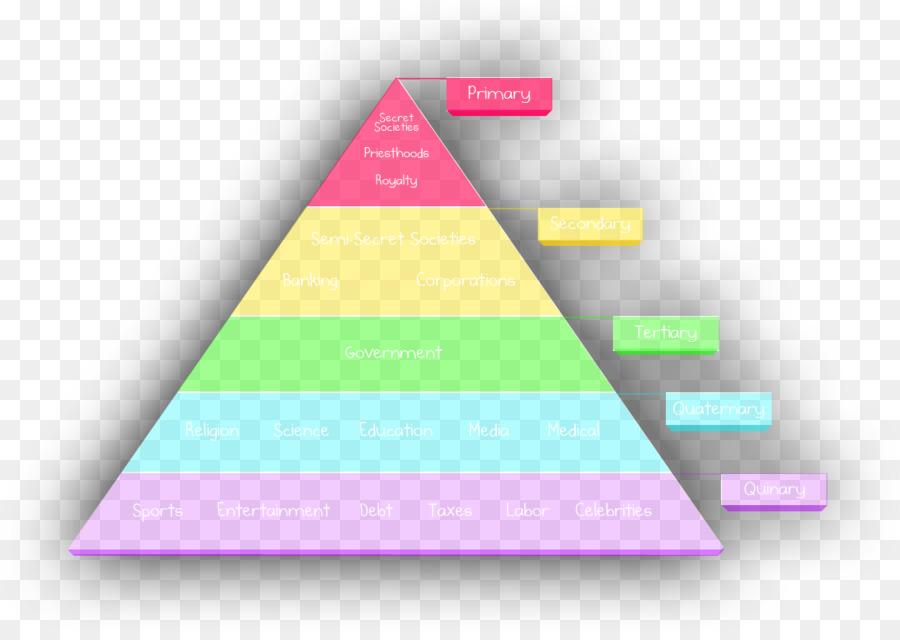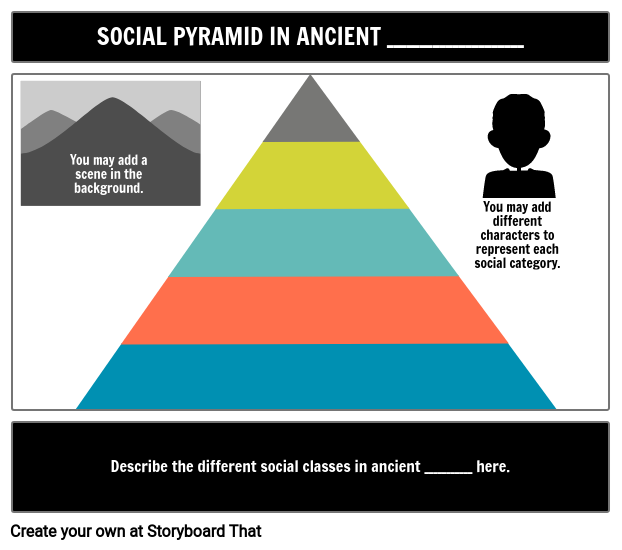Social Pyramid Of Mesopotamia: Unveiling The Hierarchy Of Ancient Civilization
Hey there, history buffs! Let's dive into the fascinating world of Mesopotamia and uncover the secrets of its social pyramid. The social pyramid of Mesopotamia was more than just a structure; it was a reflection of how society functioned back then. Think of it as the blueprint of ancient power dynamics. So, buckle up and get ready for an epic journey through time!
This article will take you on a deep dive into the social structure of Mesopotamia, shedding light on how people lived, worked, and thrived in one of the world's earliest civilizations. We’ll explore the different layers of the social pyramid, from the top dogs to the everyday folks who made this civilization tick.
By the time you finish reading, you’ll have a solid understanding of the social pyramid of Mesopotamia and its relevance to modern society. Let’s get started, shall we?
- Bunkralbum The Ultimate Guide To Exploring The World Of Hidden Musical Gems
- Meet The Cast Of Two And A Half Men A Hilarious Journey Through The Lives Of Your Favorite Tv Characters
Table of Contents
- Introduction to the Social Pyramid
- A Quick Overview of Mesopotamia
- Understanding the Social Structure
- The Kings and Rulers
- Priests and Religious Figures
- The Nobility Class
- Merchants and Traders
- Artisans and Skilled Workers
- Farmers and Laborers
- Slaves and Servants
- Legacy of the Social Pyramid
- Wrapping It Up
Introduction to the Social Pyramid
Alright, let’s kick things off with the basics. The social pyramid of Mesopotamia was a hierarchical system that organized society into distinct classes. Think of it as a ladder where everyone had their place, and climbing it was no easy feat. This system wasn’t just about social status; it defined roles, responsibilities, and even daily life.
The pyramid structure wasn’t random; it was rooted in the economic, political, and religious systems of the time. The higher you were on the pyramid, the more power and influence you wielded. But hey, don’t think it was all glitz and glamour at the top. Each level had its own set of challenges and rewards.
A Quick Overview of Mesopotamia
Mesopotamia, often called the cradle of civilization, was located between the Tigris and Euphrates rivers. This fertile land was home to some of history’s greatest innovations, including writing, agriculture, and urbanization. But beyond these achievements, the social pyramid played a crucial role in shaping daily life.
Location and Geography
The geography of Mesopotamia influenced its social structure. The fertile land allowed for agriculture, which supported a growing population. This, in turn, created a need for organization and governance, leading to the development of the social pyramid.
Understanding the Social Structure
Now, let’s break down the social structure of Mesopotamia. The pyramid wasn’t just a visual representation; it was a way of life. Each level had its own set of rules and expectations. Here’s a quick rundown:
- Kings and Rulers: The top of the pyramid, wielding ultimate power.
- Priests and Religious Figures: The spiritual leaders who bridged the gap between gods and mortals.
- Nobility: The wealthy elite who enjoyed privileges and power.
- Merchants and Traders: The middle class who facilitated trade and commerce.
- Artisans and Skilled Workers: The craftsmen who created goods and services.
- Farmers and Laborers: The backbone of the economy, producing food and resources.
- Slaves and Servants: The lowest rung, working under harsh conditions.
The Kings and Rulers
At the very top of the social pyramid were the kings and rulers. These guys weren’t just figureheads; they held absolute power. Kings were seen as divine representatives, chosen by the gods to govern the land. Their word was law, and their decisions shaped the destiny of the civilization.
Authority and Power
The authority of kings extended beyond politics. They were involved in everything from war to infrastructure. Some of the most famous Mesopotamian rulers, like Sargon of Akkad and Hammurabi, left lasting legacies through their conquests and laws.
Priests and Religious Figures
Right below the kings were the priests and religious figures. Religion was a cornerstone of Mesopotamian life, and priests played a vital role in society. They were seen as intermediaries between the gods and the people, conducting rituals and ceremonies.
Spiritual Influence
Priests had immense influence over daily life. They interpreted omens, performed sacrifices, and maintained the temples. Their knowledge of the divine gave them a unique position in the social pyramid.
The Nobility Class
The nobility class consisted of wealthy landowners, military leaders, and high-ranking officials. These individuals enjoyed privileges such as owning large estates and holding important positions in government. Their wealth and status allowed them to live comfortably, often far removed from the struggles of the lower classes.
Wealth and Privilege
The nobility class was characterized by its wealth and influence. They controlled vast resources and had access to luxury goods. Their lifestyle was a stark contrast to the everyday struggles of the common people.
Merchants and Traders
Merchants and traders formed the backbone of the Mesopotamian economy. They facilitated trade, bringing goods from distant lands and exporting local products. This class was crucial for the prosperity of the civilization.
Commerce and Trade
Trade routes connected Mesopotamia with neighboring regions, allowing for the exchange of goods and ideas. Merchants played a key role in this network, ensuring the flow of resources and wealth.
Artisans and Skilled Workers
Artisans and skilled workers were the craftsmen of Mesopotamia. They created everything from pottery to jewelry, using their skills to meet the needs of society. Their work was essential for daily life and cultural expression.
Craftsmanship and Innovation
Artisans were known for their creativity and innovation. They developed new techniques and tools, pushing the boundaries of what was possible. Their contributions to society were invaluable.
Farmers and Laborers
Farmers and laborers made up the largest segment of the population. They worked tirelessly to produce food and resources, sustaining the entire civilization. Their efforts were the foundation of Mesopotamian society.
Agriculture and Daily Life
Farming was the primary occupation for most people. Techniques like irrigation allowed for bountiful harvests, supporting a growing population. Farmers played a crucial role in the economy, ensuring that everyone had enough to eat.
Slaves and Servants
At the bottom of the social pyramid were the slaves and servants. These individuals worked under harsh conditions, often without rights or freedoms. Their labor was essential for the functioning of the civilization.
Life in Servitude
Slavery was a harsh reality for many. While some slaves were treated well, others faced brutal treatment. Their stories are a reminder of the inequalities that existed in ancient societies.
Legacy of the Social Pyramid
The social pyramid of Mesopotamia left a lasting legacy. Its influence can be seen in modern societies, where hierarchies still play a significant role. Understanding this ancient system helps us appreciate the complexities of human civilization.
Wrapping It Up
And there you have it, folks! The social pyramid of Mesopotamia was a fascinating system that shaped one of the world’s earliest civilizations. From kings and priests to farmers and slaves, each level had its own story to tell. So, the next time you read about ancient history, remember the social pyramid and its impact on society.
Now, it’s your turn. Leave a comment below and let me know what you think. Did you learn something new? Share this article with your friends and dive deeper into the world of Mesopotamia. Until next time, keep exploring and stay curious!



Detail Author:
- Name : Tyrell Beer PhD
- Username : beahan.reggie
- Email : ole.cruickshank@yahoo.com
- Birthdate : 1971-06-16
- Address : 46608 Herzog Village Apt. 088 Bechtelarside, OR 15415
- Phone : +1-859-807-5143
- Company : Powlowski and Sons
- Job : Maintenance and Repair Worker
- Bio : Delectus sunt necessitatibus distinctio illo nam sit. Ab quidem est error eligendi. Placeat adipisci ad esse mollitia consequatur voluptatem non.
Socials
instagram:
- url : https://instagram.com/schroederj
- username : schroederj
- bio : Voluptatum voluptatibus beatae et. Enim quia qui reprehenderit quae ad recusandae iusto.
- followers : 4867
- following : 2328
linkedin:
- url : https://linkedin.com/in/juliana7904
- username : juliana7904
- bio : Velit architecto eum eaque fuga et.
- followers : 6710
- following : 1014